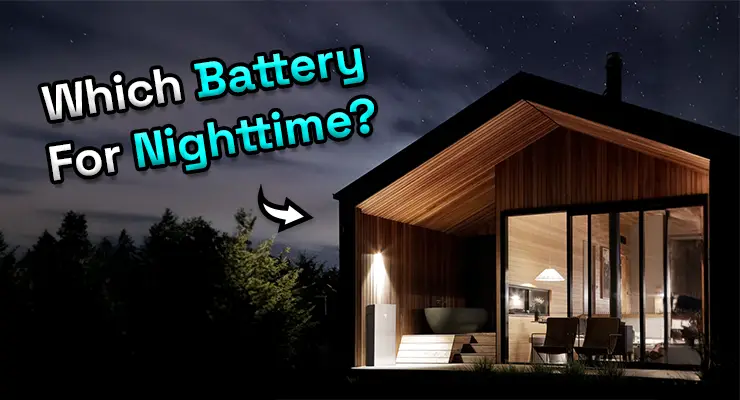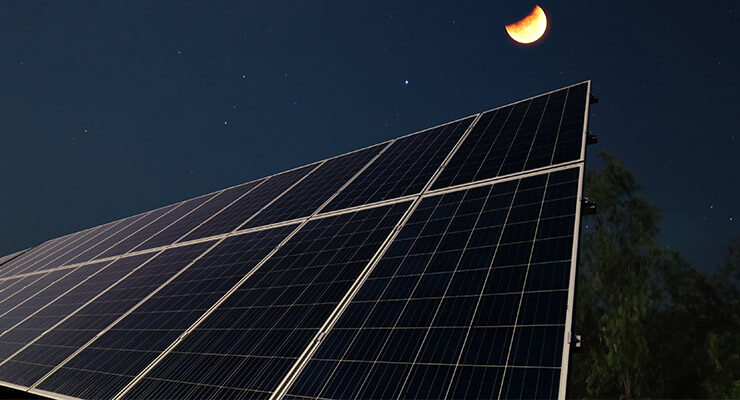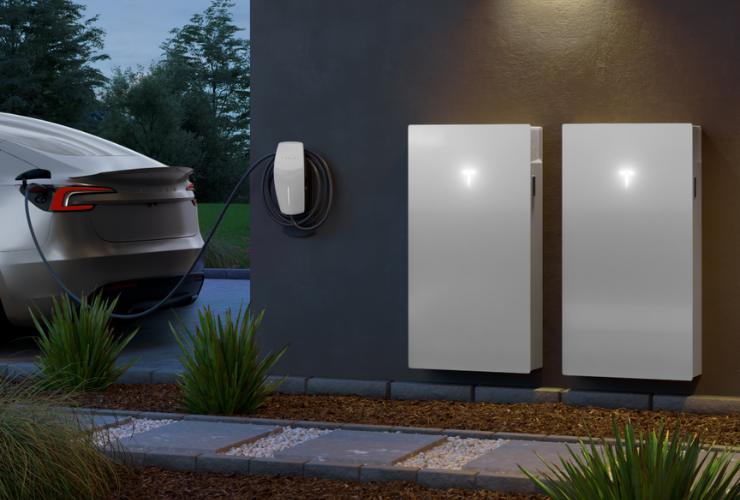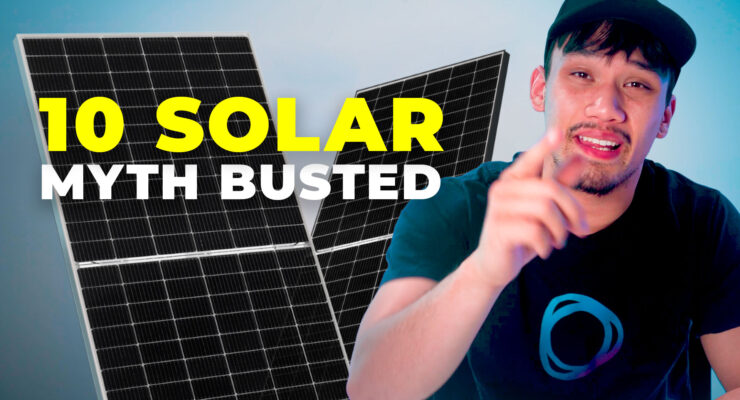How do you choose the best solar battery for nighttime use?
Solid sizing stops overspend and disappointment.
- Study smart-meter data or retailer apps. Half-hour graphs reveal the exact kWh you burn between dusk and dawn.
- List habitual night loads. Fridges, reverse-cycle air-con, pool pumps, and EV chargers are common culprits.
- Add a 10–20 % buffer. Covers early-morning coffee, heat-wave spikes, or unexpected guests.
If those steps show 9 kWh overnight, target at least 9 kWh of usable storage, not just nominal capacity.
Key specs that matter after dark
Capacity (kWh). Most homes settle on 10–13 kWh; all-electric or EV-heavy sites may need 15 kWh plus.
Depth of discharge: Modern LFP units, including Powerwall 3 and many modular stacks, allow 100% DoD, so the full rating is usable.
Continuous and peak power (kW): Make sure the battery’s continuous rating handles combined evening appliances, while its short-burst peak covers fridge compressors and pump start-ups.
Round-trip efficiency: Expect around 95–98 % for DC-coupled charging, and 90–94 % for AC-coupled systems because solar DC is converted to AC, back to DC for storage, then AC again for household use—three conversions in all.
Cycle life and throughput warranty: A trustworthy warranty offers ten years or a specified megawatt-hour throughput while guaranteeing 60–70 % capacity retention.
Chemistry choices: Why LFP rules in 2025
Lithium-ion trumps lead-acid on energy density, space, and maintenance. Within it, LFP:
- Handles heat better—critical for Australian roofs and garages.
- Delivers more cycles—often 6,000 + full cycles.
- Supports 100 % DoD without stressing cells.
High-density NMC packs still shine where space is tight, but new models such as Powerwall 3 now use LFP anyway. Lead-acid’s low upfront price rarely offsets its shorter life and fussier care.
Inverter compatibility and coupling methods
DC-coupled (hybrid) systems: Solar panels feed DC directly into the battery via a hybrid inverter —fewer conversions, higher efficiency. Sungrow SH-hybrid + SBR and Sigenergy SigenStor (which incorporates a hybrid inverter plus 5 kWh or 8 kWh battery modules) top the list.
AC-coupled retrofits: Perfect when you already have a compliant solar inverter and don’t want to replace it. The Tesla Powerwall 3 connects to the switchboard with minimal rewiring and supplies blackout backup, but suffers from that triple-conversion loss. Sigenergy SigenStor can operate in AC-coupled mode, yet its sweet spot remains DC-coupled for efficiency.
Always have your installer confirm firmware compatibility and Distribution Network Service Provider (DNSP) export limits.
Compliance, safety, and location
AS/NZS 5139 bans battery cabinets in habitable rooms, ceiling voids, wall cavities, or beneath stairways. Garages and shaded exterior walls on fire-resistant mounts are typical. From 29 May 2024, only SAA-accredited designers and installers can legally commission new systems and unlock manufacturer warranties or rebates.
Backup power: lights on when the grid is off
Automatic switchover requires both hardware and correct wiring. Powerwall 3 includes this as standard; SigenStor offers an integrated backup port; Sungrow hybrid systems pair with a dedicated Backup Box. Discuss essential circuits—Wi-Fi, refrigeration, medical gear—so the installer sizes cabling and switchgear correctly.
Smarter control and future-proofing
The mySigen app leverages AI to optimise charging for weather forecasts and tariffs, while Tesla’s app offers “Self-Powered” and “Storm Watch” modes. Data transparency lets you delay the dishwasher or pre-cool the house before a cloudy day, squeezing extra value from each stored kilowatt-hour.
If an EV, induction cooktop, or heat-pump pool heater is on the horizon, modular architecture matters. SigenStor stacks up to six 8 kWh modules—48 kWh per tower—while Sungrow SBR grows in 3.2 kWh steps.
Dollars, rebates, and realistic payback
Installed costs still average $1,000–$1,400 per usable kWh, though competition is nudging prices down. Savings accelerate when you combine:
- Cheaper Home Batteries Program—~30 % or ~$335 per usable kWh discount from 1 July 2025.
- Western Australia—up to $5,000 (Synergy) or $7,500 (Horizon Power) subsidy, also from July 2025.
- Northern Territory—$400 per kWh grant, capped at $5,000 per home.
- ACT, Victoria, Tasmania—interest-free loans complement state-specific rebates.
Factor in self-consumption, feed-in tariffs, and rising grid prices, and a six-to-nine-year payback is achievable for many homes.
Six-step checklist for choosing the right night-time battery
- Measure night-time kWh usage—use bills, smart-meter data, and a buffer.
- Match the usable capacity and power rating to that demand.
- Pick LFP chemistry for safety and full-depth discharge unless space is extremely tight.
- Decide on coupling—hybrid DC for new builds, AC retrofit for speed.
- Engage an SAA-accredited installer and insist on AS/NZS 5139 compliance.
- Leverage incentives and choose modular designs for future growth.
Get at least two detailed quotes. If you need help, Your Energy Answers can connect you—free of charge—to local, vetted professionals. With the right battery, every sunset becomes tomorrow’s free power, your bills shrink, and Australia’s grid grows a little greener.





